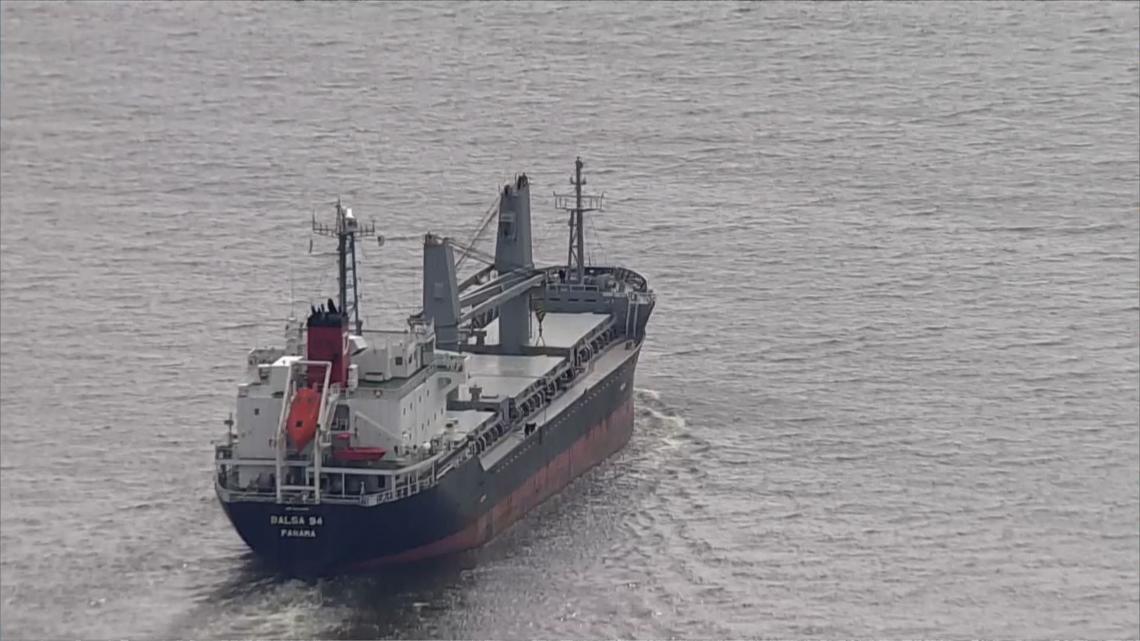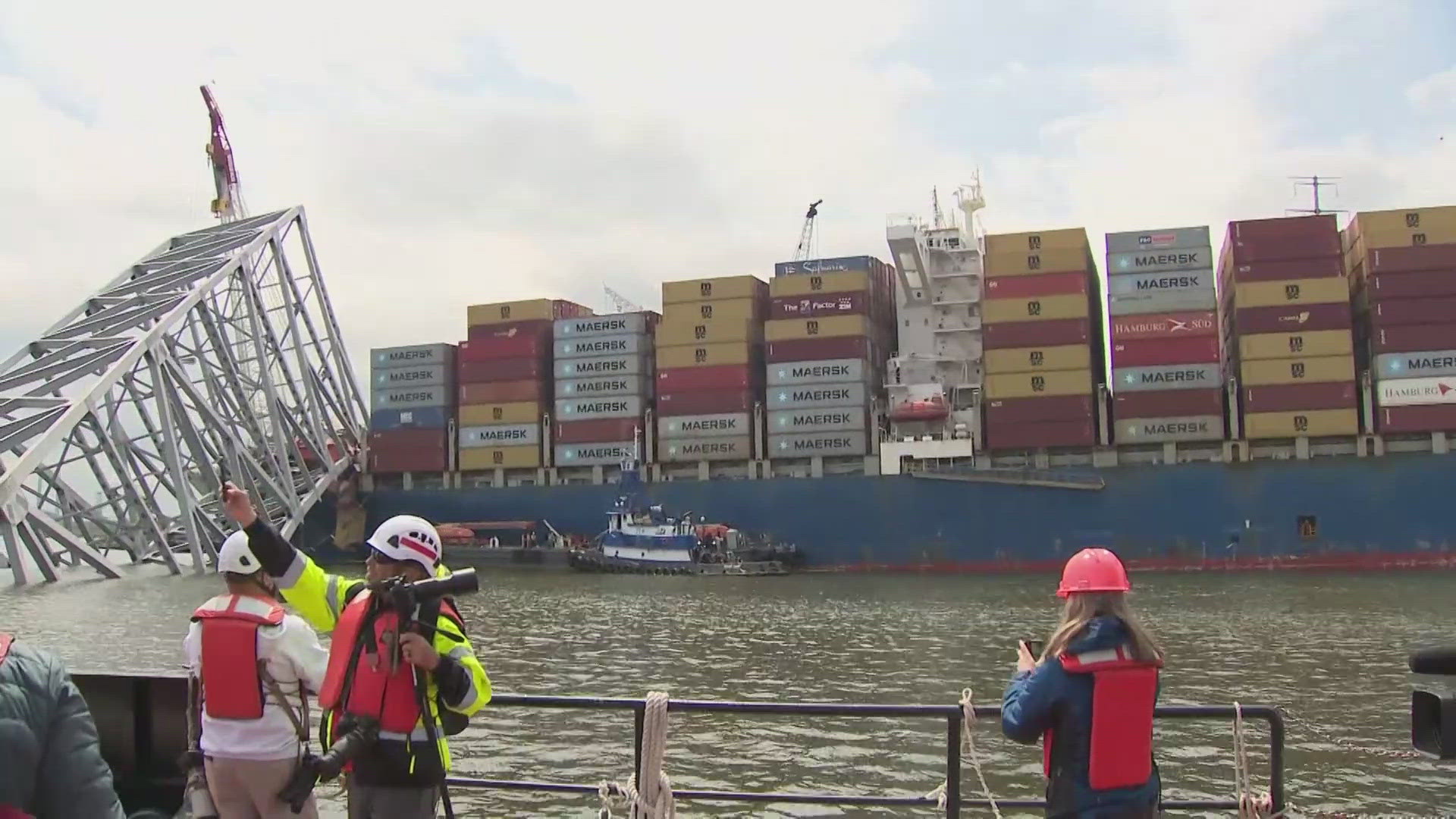BALTIMORE — The first cargo ship passed through a newly opened deep-water channel in Baltimore on Thursday after being stuck in the harbor since the Francis Scott Key Bridge collapsed four weeks ago.
The Balsa 94, a bulk carrier sailing under a Panama flag, passed through the new 35-foot channel headed for St. John, Canada.
The ship is one of five stranded vessels expected to pass through the new, temporary channel. On Thursday morning, the vessel moved through the channel guided by two tug boats, one in front and one behind. It passed slowly by the wreckage of the bridge and the Dali, the massive container ship that caused the collapse when it slammed into one of the bridge’s support columns.
The Balsa 94 is expected to arrive in Canada on Monday.


The new channel will remain open until Monday or Tuesday. It will then close again until roughly May 10 while crews work to remove steel from the Dali and refloat the ship, which will then be guided back into the port, officials said earlier this week.
The 35-foot depth is a substantial increase over the three other temporary channels established in recent weeks. It puts the cleanup effort slightly ahead of schedule, as officials previously said they hoped to open a channel of that depth by the end of April.
Five of the seven cargo ships that have been stuck in Baltimore’s harbor will be able to pass through the new channel, including one loaded car carrier, officials said. Other ships are scheduled to enter the port, which normally processes more cars and farm equipment than any other in the country.
The port’s main channel, with a controlling depth of 50 feet, is set to reopen next month after the ship has been removed. That will essentially restore marine traffic to normal.
Col. Estee Pinchasin who commands the US Army Corps of Engineers said Thursday's channel opening is a major step forward.
"It's a really exciting day for the city of Baltimore. But we're always mindful of the fact that we still have two people that we're still trying to recover for those families," Pinchasin said.
"While this incremental step is very momentous, we're still looking to the much bigger and more important parts of this mission and also the long game to open the 50 foot channel."
The partial channel opening was achieved by cutting the bridge wreckage in sections as heavy as 560 tons, and using barge-mounted cranes to lift them out of the water.
The sections are transferred by barge to the nearby Tradepoint Atlantic port facility where the wreckage is being further broken down for transport and recycling.
Pinchasin said the muck on the bottom of the worksite has proven challenging. She said wreckage has sunk into the soft bottom and compared pulling it out to a person stepping in deep mud and trying to walk further without having a boot pulled off.
Engineers are now considering the use of small explosive charges to break stressed sections of the bridge resting on the Dali because it may prove to be the safest way to demolish the sections into manageable pieces.
I final decision on methods for moving the most challenging pieces of wreckage has not been made, Pinchasin said.

